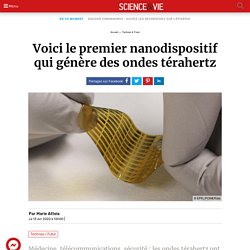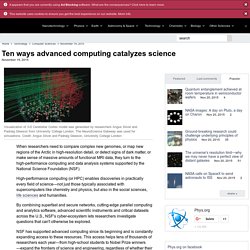

hamilton
Voici le premier nanodispositif qui génère des ondes térahertz. Médecine, télécommunications, sécurité : les ondes térahertz ont de multiples usages, et sont inoffensives pour la santé.

Une équipe de chercheurs suisses a réussi à mettre au point un minuscule appareil capable de les générer. Jusqu'ici, les dispositifs capables de générer des ondes térahertz (entre 100 GHz et 30 THz) étaient généralement coûteux et encombrants. Une époque bientôt révolue grâce aux chercheurs du POWERlab de l'Ecole polytechnique fédérale de Lausanne, qui ont réussi à concevoir un nanodispositif innovant, capable de diffuser ces ondes. Sur le même sujet. 10000000 791032691427962 2956160624729522176 n. Arô - acid resurrection pt.1. Ten ways advanced computing catalyzes science.
When researchers need to compare complex new genomes, or map new regions of the Arctic in high-resolution detail, or detect signs of dark matter, or make sense of massive amounts of functional MRI data, they turn to the high-performance computing and data analysis systems supported by the National Science Foundation (NSF).

High-performance computing (or HPC) enables discoveries in practically every field of science—not just those typically associated with supercomputers like chemistry and physics, but also in the social sciences, life sciences and humanities. By combining superfast and secure networks, cutting-edge parallel computing and analytics software, advanced scientific instruments and critical datasets across the U.S., NSF's cyber-ecosystem lets researchers investigate questions that can't otherwise be explored.
NSF has supported advanced computing since its beginning and is constantly expanding access to these resources. Advancing the state of modern biology.
Ramanujana. Pyramids. _ Treepalium.